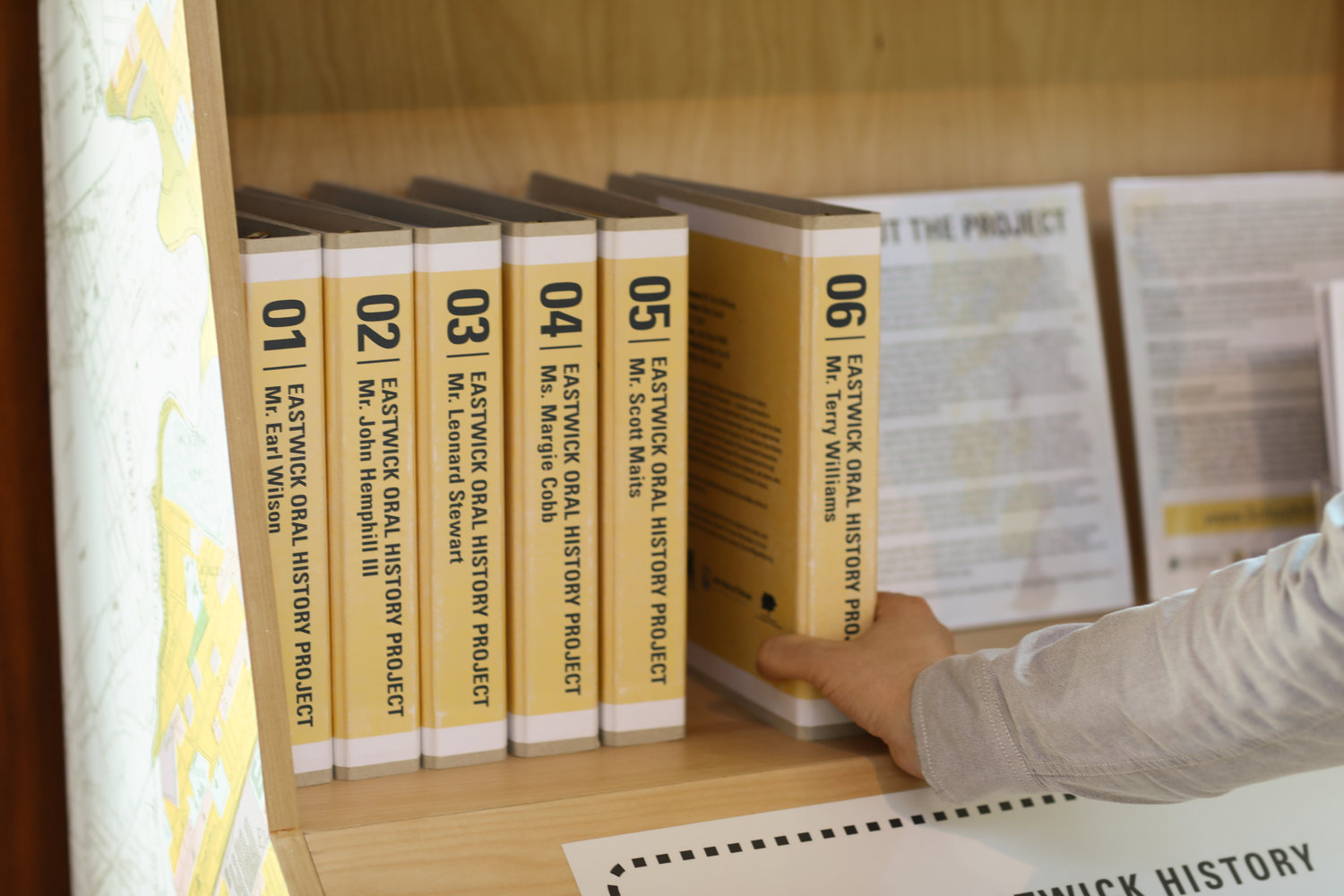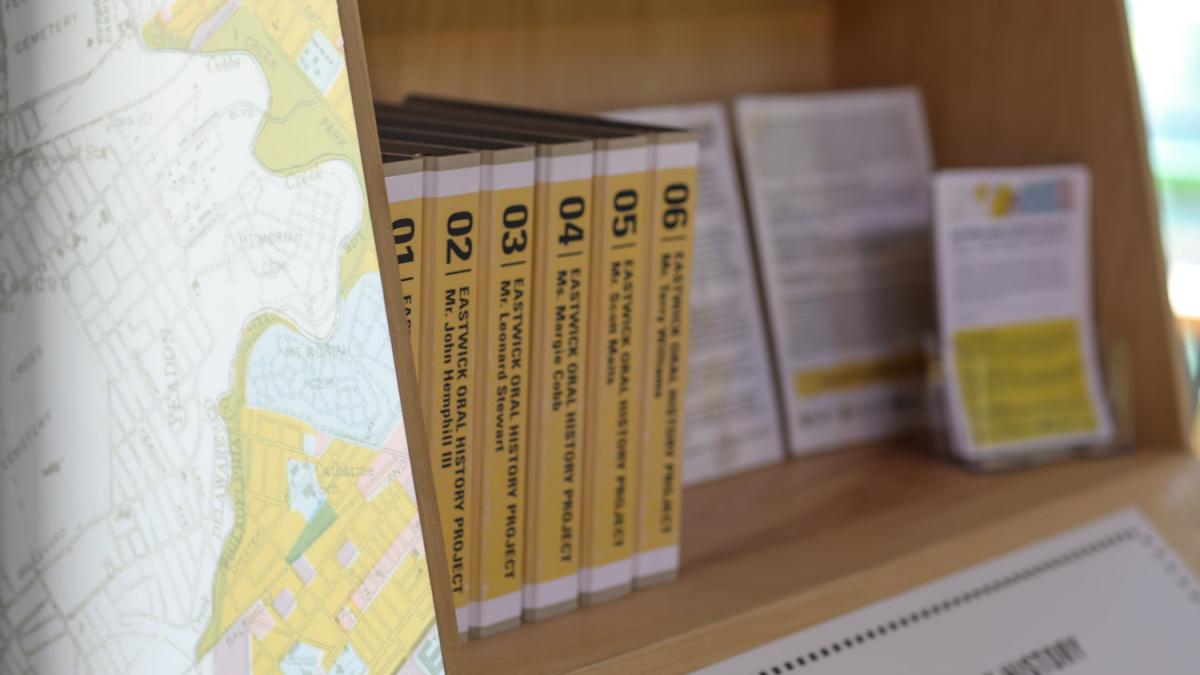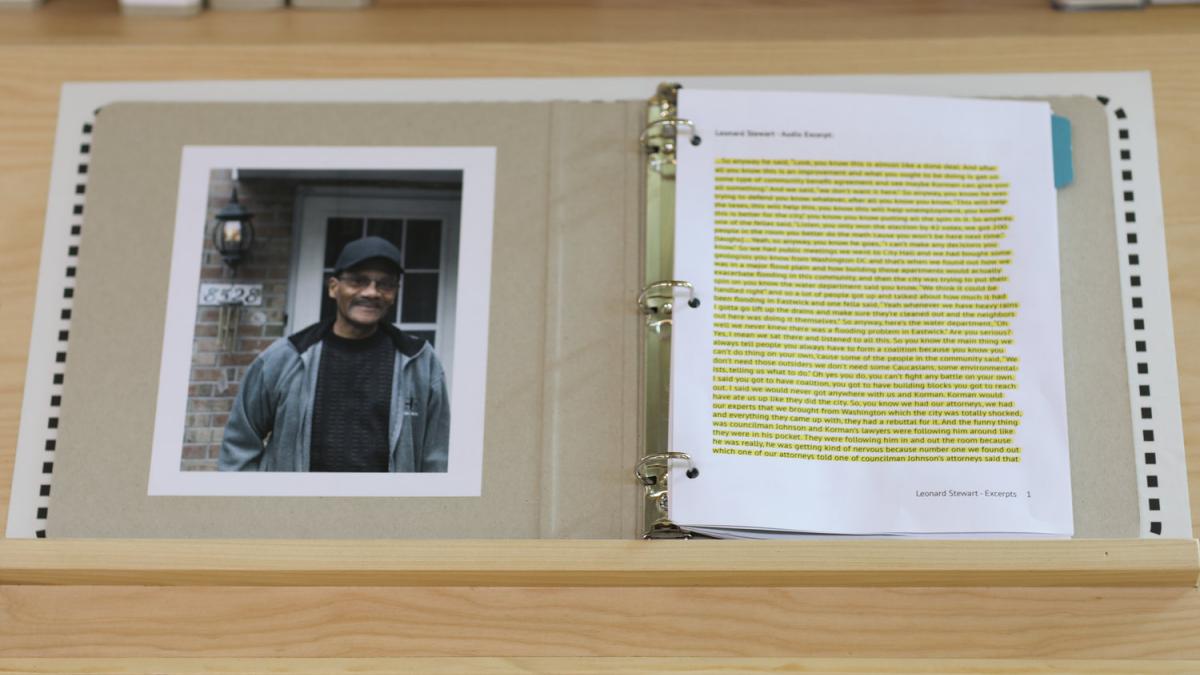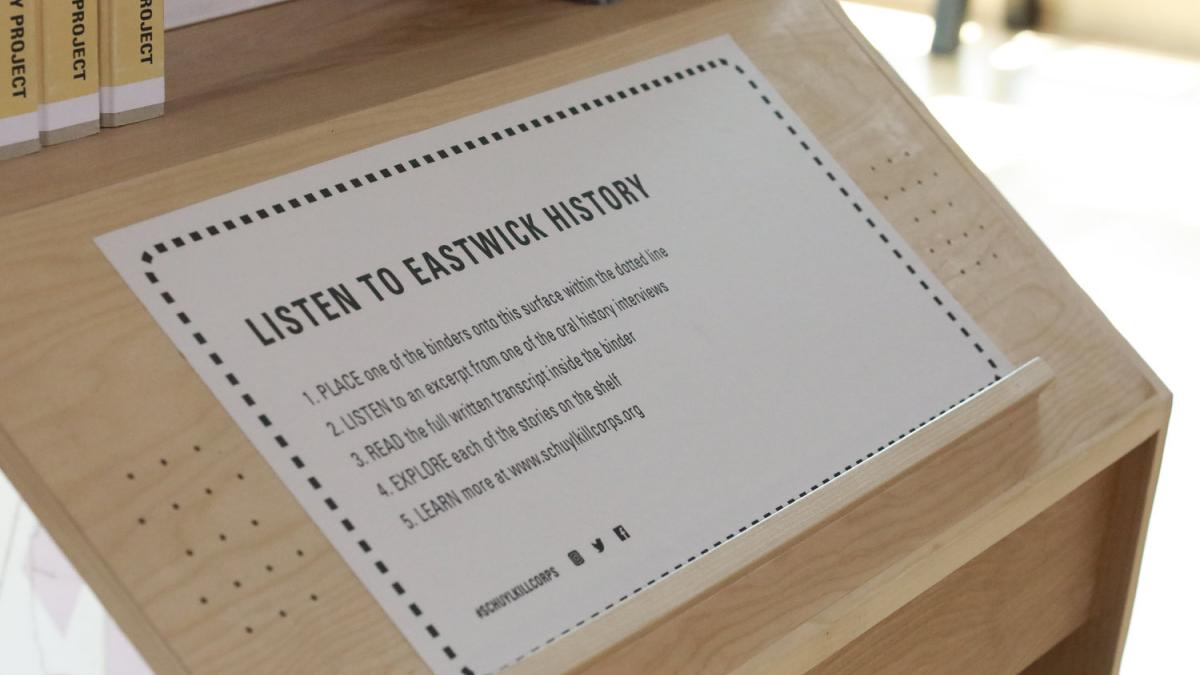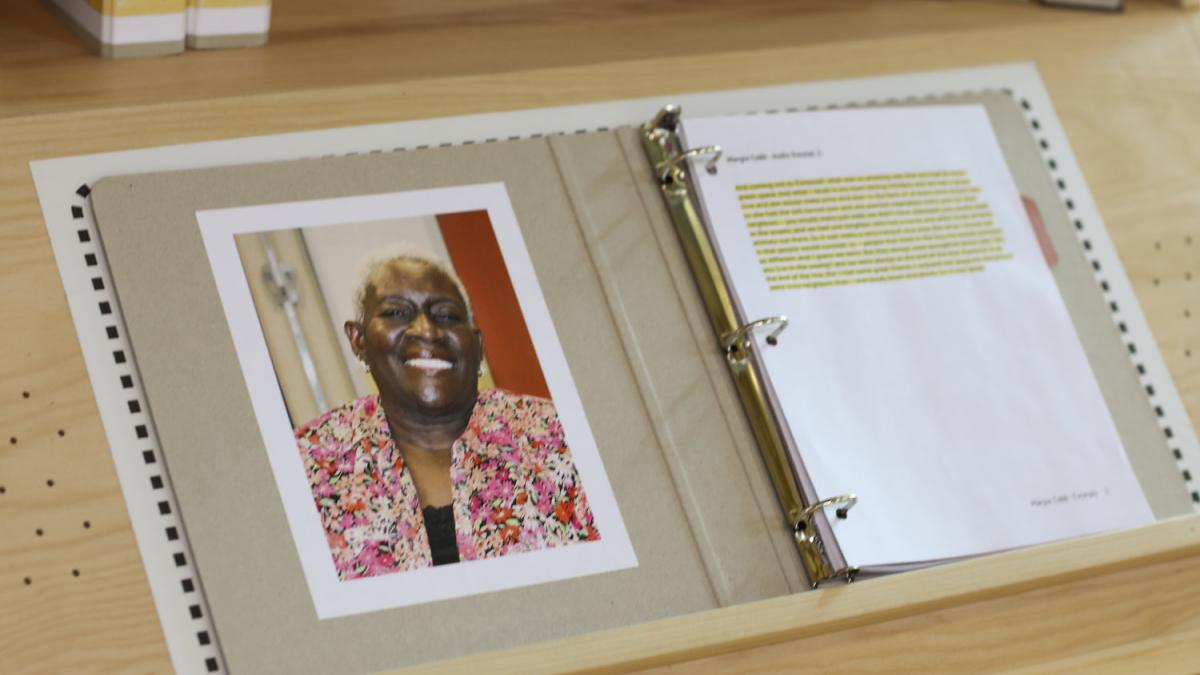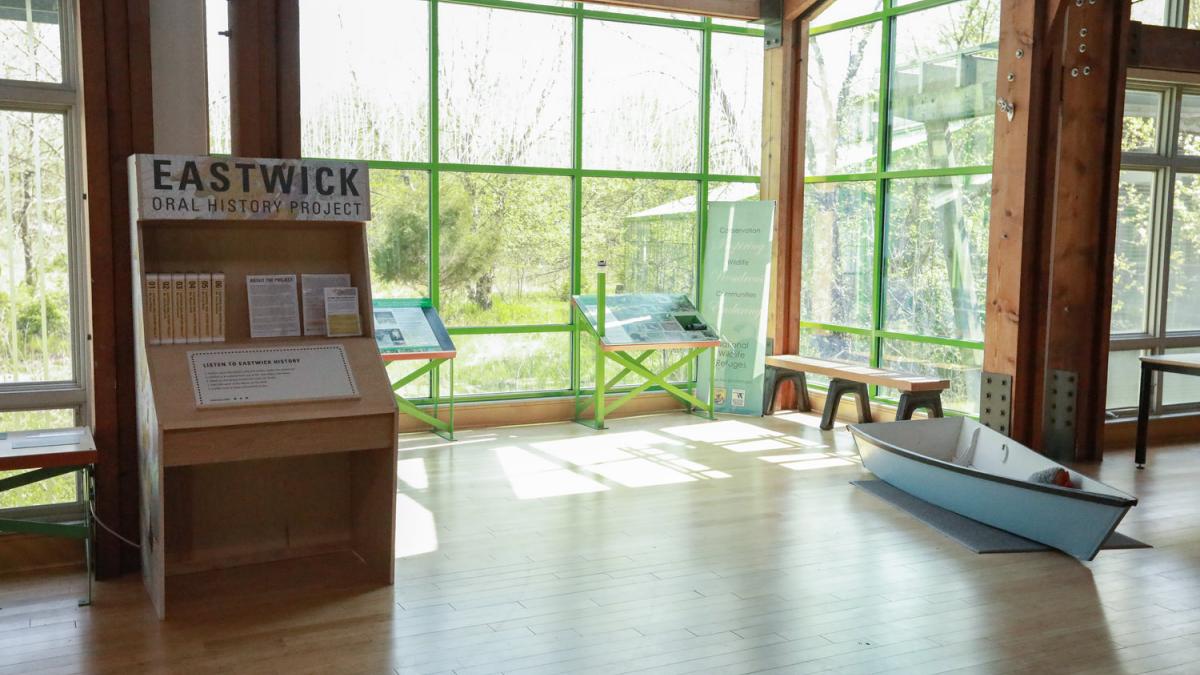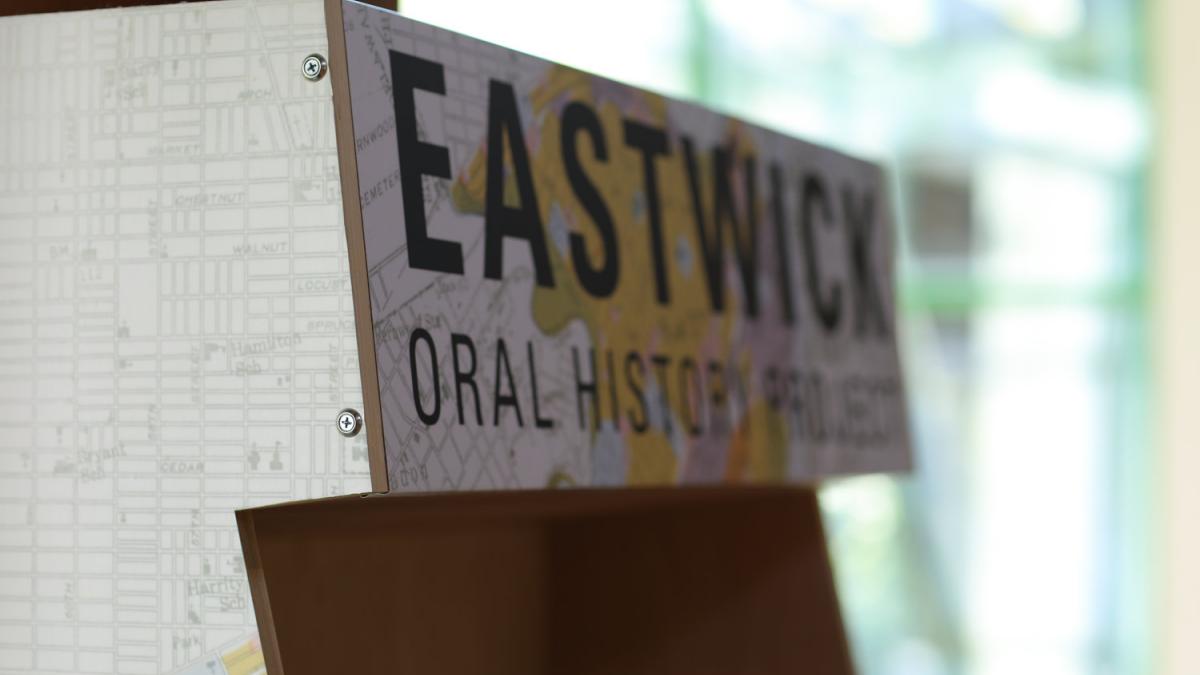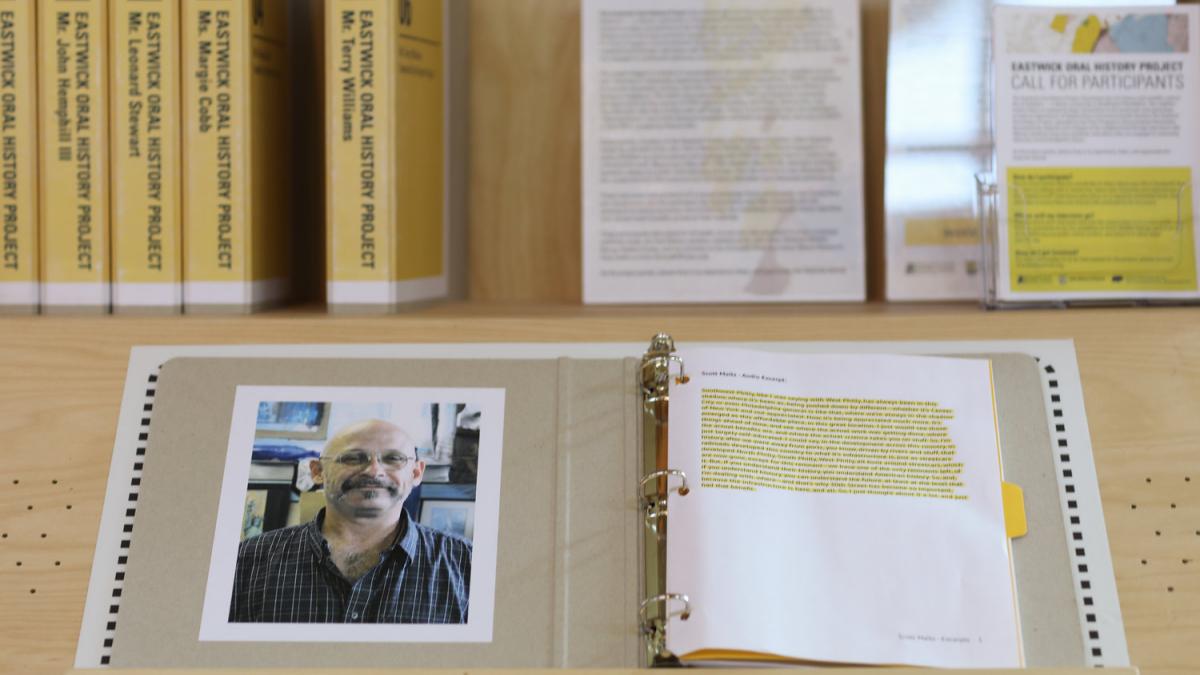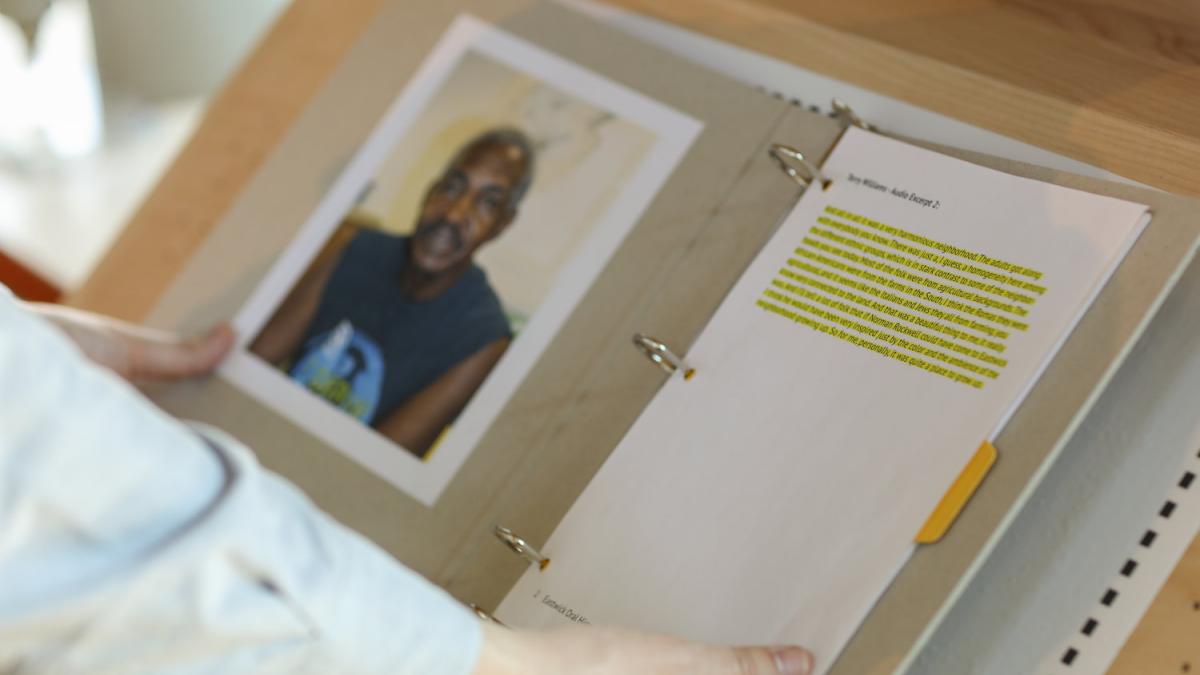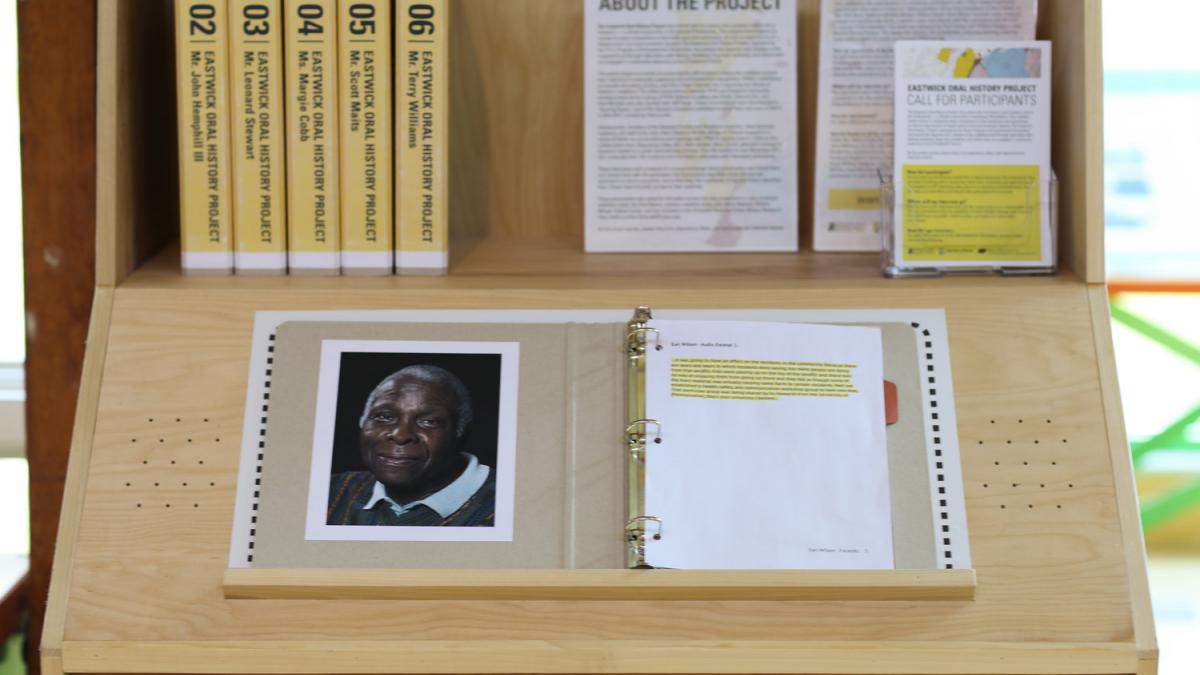Eastwick Oral History Kiosk "Jukebox" Installation at John Heinz National Wildlife Refuge
May 18, 2018
The Eastwick Oral History Project documents the rich history and complex cultural life of Eastwick — a vibrant community in Southwest Philadelphia. The neighborhood’s history is marked by deep connections to the landscape and waterways, as well as experiences of displacement and environmental injustice. The Eastwick Oral History Project, operated by the Penn Program in Environmental Humanities, documents the legacies and changes of the neighborhood through interviews with lifelong residents, long-time residents, and others who are engaged in community advocacy around Eastwick’s future.
The project began in a series of conversations with Eastwick community members around their histories of community organizing and environmental engagement. PPEH’s commitment to mutually document, archive, and share these histories was inspired by the efforts of Eastwick neighbors. The initial conversations between PPEH and Eastwick community members were led by a group of PPEH fellows including Jess Holler, Patricia Kim, and Paul Mitchell, who also worked with Jeff Nagle. These conversations were documented in “Hearing Rivers,” part of the Date/um installation exhibited twice at Penn and once at WHYY in 2016-2017, curated by Patricia Kim.
Subsequently, members of the Eastwick Friends and Neighbors Coalition, other Eastwick residents, and staff at the John Heinz National Wildlife Refuge at Tinicum engaged in a series of follow-up conversations and meetings with PPEH to explore how to continue this collaborative work. Beginning in May 2017, Penn student, Mary Cerulli, attended meetings in Eastwick related to a public land planning process. Over the months of July-November 2017, she conducted both informational and oral history interviews with interested participants.
These interviews were products of a mutual exchange: Each conversation was transcribed and shared back with the participant; the transcription was then reviewed with the participant to ensure accuracy; and at that time, the contributor of the oral history specified their chosen level of public access to their materials.
In February 2018, an experimental kiosk – nicknamed the "Oral History Jukebox" – was installed at the John Heinz National Wildlife Refuge, based on materials produced through the second phase of the project. The kiosk served as a prototype to engage and honor the contributions of community participants with a new media installation.
At Heinz, Visitors can both read and listen to "talking binders" at the first installation of the jukebox. Each binder includes audio excerpts played out loud from the kiosk, a portrait taken and shared with the participant, and the full transcript of the interview. The kiosk was designed by William Hodgson and Paul Farber, and built by Pernot Hudson. The design documents, list of materials, and programming code are open and available for public use from the PPEH website.
Those oral histories by participants who opted for full public access are now presented in the kiosk at the John Heinz National Wildlife Refuge Visitors Center, and are included on the Schuylkill River and Urban Waters Research Corp online archive (SchuylkillCorps.org).
As the project grows, please drop in to experience, listen, and appreciate the histories shared.
Documentation of the Eastwick Oral History Project Kiosk at John Heinz National Wildlife Refuge at Tinicum (William Hodgson/PPEH)
Special thanks to all the contributors to this project: Current Participants (Ms. Margie Cobb, Ms. Nancy Cobb, Mr. John Hemphill III, Mr. Scott Maits, Mr. Leonard Stewart, Mr. Terry Williams, and Mr. Earl Wilson), Mary Cerulli, Hayley Ahouse, Alex Anderson, Mariana Bergerson, Caroline Carney, Joanne Douglas, Eastwick Friends and Neighbors Coalition, Eastwick Regional Library, Paul Farber, Friends of Heinz National Wildlife Refuge, Mindy Fullilove, Lamar Gore, William Hodgson, Jess Holler, Marilyn Howarth, Pernot Hudson, Patricia Kim, Jen McCart, Paul Mitchell, Michael Nairn, Penn School of Arts & Sciences, and the Staff and Community at John Heinz National Wildlife Refuge in Tinicum.

